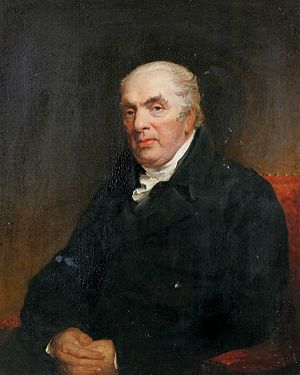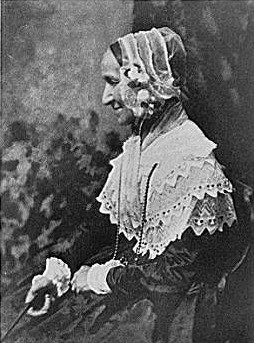Edward Rigby (physician) facts for kids
Quick facts for kids
Edward Rigby
|
|
|---|---|
 |
|
| Born | 27 December 1747 Chowbent, England
|
| Died | 27 October 1821 (aged 73) |
| Nationality | British |
| Education | Warrington Academy |
| Occupation | physician |
| Political party | Whig |
Edward Rigby (born December 27, 1747 – died October 27, 1821) was an important English doctor, writer, and local leader. He worked hard to improve public health and farming in his community.
Life and Work
Edward Rigby was born in Chowbent, Lancashire, England, on December 27, 1747. His father was John Rigby, and his mother was Sarah. Edward had a sister who married Dr. Caleb Hillier Parry. Their son, Sir William Edward Parry, later became a famous explorer.
Edward went to school at Norwich School and Warrington Academy. In 1762, he began training to be a surgeon with David Martineau in Norwich. After studying in London, he became a member of the Corporation of Surgeons in 1769. That same year, he got married and started his medical practice in Norwich.
Helping His Community
Edward Rigby cared a lot about helping others. In 1786, he helped create the Norfolk Benevolent Society. This group supported the wives and children of doctors who had passed away.
In July 1789, he traveled to France and other parts of Europe. While there, he saw the storming of the Bastille, which was a major event at the start of the French Revolution.
Rigby was also very interested in farming. He was a friend of Thomas Coke, a well-known farmer from Holkham. Rigby even did his own farming experiments on his land at Framingham Earl, near Norwich.
Public Service
Edward Rigby was involved in local government in Norwich. In 1783, he joined the group that managed help for the poor, called the "guardians of Norwich." He tried to make the Poor Laws (rules about helping the poor) work better and save money. He faced some challenges but continued to work for improvements.
He became an alderman (a senior member of the city council) in 1802. Then, he served as sheriff (a local official) in 1803 and mayor of Norwich in 1805. As mayor, he led a meeting to discuss how to deal with smallpox in the city.
Rigby is also known for bringing new ideas to Norwich. He is said to have introduced the "flying shuttle" to local manufacturers. The flying shuttle was a new tool that made weaving much faster. He also helped bring vaccination to the area, which was a big step in preventing diseases like smallpox.
Political Views
In politics, Edward Rigby was a Whig. Whigs were a political group who generally supported more power for Parliament and less for the king. He supported William Windham, another Whig politician. However, in 1794, when Windham had to run for election again, Rigby supported a different candidate, James Mingay. Even though Windham won, Rigby's support helped Mingay become more well-known as a Whig.
Edward Rigby passed away on October 27, 1821, and was buried in Framingham.
Writings
Edward Rigby wrote several important books and reports, especially about medicine and farming.
- In 1776, he published An Essay on the Uterine Hæmorrhage. This medical book was very important and helped make him a respected doctor. It was even translated into French and German.
- He also wrote An Essay on the Theory and Production of Animal Heat in 1785, which was about how bodies create heat.
- His book Chemical Observations on Sugar (1788) explored the science of sugar.
- He wrote about how to care for the poor in Norwich in Reports of the Special Provision Committee (1788) and Further Facts relating to the Care of the Poor.
- Rigby's interest in farming led him to write Holkham, its Agriculture, etc. (1813), which was about farming practices at Holkham.
- He also wrote about vaccination in Report of the Norwich Pauper Vaccination (1813).
- His book Suggestions for an Improved and Extended Cultivation of Mangel Wurzel (1815) was about growing a type of beet.
- He translated a book about Italian farming called Italy: its Agriculture … from the French of Châteauvieux (1819).
- His book Framingham: its Agriculture, &c., including the Economy of a small Farm (1820) shared his own farming experiences.
- His Letters from France, which he wrote to his wife in 1789, were published after his death in 1880 by his daughter, Lady Eastlake.
Family
Edward Rigby was married twice. His first wife was Sarah Dybal, and they had two daughters.
In 1803, he married Anne Palgrave. They had twelve children together. Among their children were Edward Rigby (who also became a doctor) and Elizabeth Eastlake (who became a writer and art critic). Interestingly, in 1817, Anne gave birth to four children at once: three girls and one boy!


